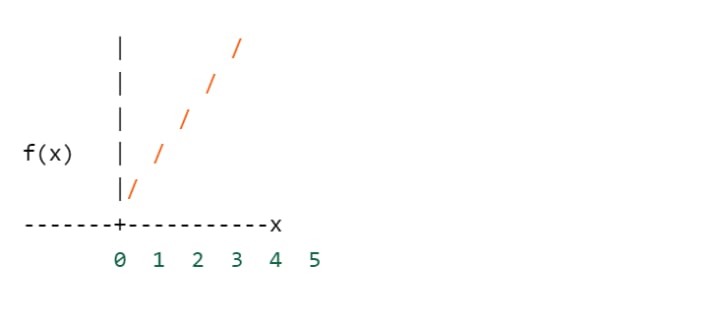Mastering Relations and Functions: A Comprehensive Class 12 Maths Course by MathYug
Expert-Taught MathYug Relations and Functions Class 12 Maths Course

Relations and functions are important concepts in mathematics that are covered in class 12. The concept of relations is fundamental to many areas of mathematics, including algebra, number theory, and topology. Relations are a way to describe the relationships between objects or elements in a set. Functions, on the other hand, are a way to describe the relationship between two sets.
In class 12 mathematics, the study of relations and functions begins with an introduction to sets. A set is a collection of objects or elements, and the elements can be anything from numbers to shapes to people. Sets are usually denoted by capital letters, and the elements of a set are denoted by small letters. For example, a set of even numbers could be denoted as E = {2, 4, 6, 8, ...}.
A relation is a way to describe the relationship between two elements of a set. For example, let's say we have a set of students, S = {Alice, Bob, Charlie, Dave, Emma}, and we want to describe the relationship between each student and their favorite color. We could create a relation R that links each student to their favorite color. The relation R could be represented as follows:
R = {(Alice, blue), (Bob, green), (Charlie, red), (Dave, blue), (Emma, yellow)}
In this relation, each element of the set S is linked to an element of another set (in this case, the set of colors). The notation (Alice, blue) represents the fact that Alice likes the color blue.
There are many different types of relations, including reflexive relations, symmetric relations, and transitive relations. Reflexive relations are those where each element of a set is related to itself. For example, the relation "is equal to" is reflexive because every element is equal to itself. Symmetric relations are those where if (a, b) is in the relation, then (b, a) is also in the relation. For example, the relation "is a sibling of" is symmetric because if Alice is Bob's sibling, then Bob is also Alice's sibling. Transitive relations are those where if (a, b) and (b, c) are in the relation, then (a, c) is also in the relation. For example, the relation "is an ancestor of" is transitive because if Alice is Bob's ancestor, and Bob is Charlie's ancestor, then Alice is also Charlie's ancestor.
Functions are a type of relation where each element of the first set is related to exactly one element of the second set. In other words, each element of the first set is mapped to a unique element in the second set. For example, let's say we have a function f that maps each student in the set S to their age. The function f could be represented as follows:
f(S) = {Alice → 17, Bob → 16, Charlie → 18, Dave → 17, Emma → 16}
In this function, each student in the set S is mapped to their age. The notation "Alice → 17" means that the element "Alice" in the set S is mapped to the element "17" in the set of ages.
Functions can be represented in several ways, including using tables, graphs, and equations. For example, the function f(x) = x^2 is a quadratic function that maps each input value x to its square. The graph of this function is a parabola, and the table of values for this function would look like this:
x f(x)
0 0
1 1
2 4
3 9
4 16
5 25
As for the graph, it would be a downward-opening parabola, because the coefficient of the x^2 term is positive. The vertex of the parabola is at the point (0,0), which is the minimum point of the parabola. As x increases or decreases from 0, the value of f(x) increases, because the function is increasing as x moves away from the vertex. The graph would look something like this:

In this graph, the x-axis represents the input values for the function, while the y-axis represents the output values. The points on the graph correspond to the points in the table of values, and the curve of the parabola represents the relationship between the input and output values of the function.
In this MathYug course, you will learn about the fundamental concepts of relations and functions, including the different types of relations and functions, their properties, and their applications. The course is designed to help you deepen your understanding of these concepts and prepare you for related examinations.
Throughout the course, you will have access to high-quality video lectures, PDF notes, and assignments, which have been carefully created by expert teachers with many years of experience teaching mathematics. The assignments will feature carefully selected questions from a variety of authoritative sources, including NCERT Textbook exercises, NCERT Examples, Board's Question Bank, RD Sharma, NCERT Exemplar, and more.
By the end of the MathYug course, you will have a comprehensive understanding of the concepts of relations and functions, including their properties and applications. You will be able to solve problems and answer questions related to relations and functions confidently, making you well-prepared for related examinations.
Lecture - 9 | Inverse of functions | Invertible Functions | Relations and Functions Class 12 Maths
In this video from MathYug, we cover the topic invertible functions of chapter 1, "Relations and Functions" from Class 12 Maths. We explain the concepts in a clear and easy-to-understand manner, with examples and diagrams to illustrate key points.
Questions discussed in this video:
Question 3. Let f : X to Y be an invertible function. Show that f has unique inverse. (N)
Question 8. Let f:R-{4/3} to R be a function defined as f(x)=4x/(3x+4). The inverse of f is the map g:Range of f to R - 4/3 given by
a. g(y)=3y/(3-4y)
b. g(y)=4y/(4-3y)
c. g(y)=4y/(3-4y)
d. g(y)=3y/(4-3y)
Question 1. Consider f:R_+ to [4, infinity ) given by f(x) = x^2 + 4. Show that f is invertible with the inverse f^{-1} of f given by f^{-1}(y)=sqrt{y-4}, where R_+ is the set of all non-negative real numbers.
Question 2. Consider f : R_+ to [-5, infinity ) given by f(x) = 9x^2 + 6x - 5. Show that f is invertible with f^{-1}(y) = ( sqrt{y+6}-1/3 ).
Question 3. Let f' : N to R be a function defined as f'(x) = 4x^2 + 12x + 15. Show that f:N to S, where, S is the range of f, is invertible. Find the inverse of f.
Lecture - 6 | Equivalence Relation and Equivalence Class | Class 12 Maths | MathYug
In this video, we explore the concept of equivalence relation and equivalence class, using the example of a relation defined over the set A = {1, 2, 3, ... , 12}. Through a step-by-step proof, we demonstrate how this relation satisfies the three properties of an equivalence relation, namely, reflexivity, symmetry, and transitivity. We also obtain the equivalence class [(3, 4)] and discuss its properties.
Question 12: Let A = {1, 2, 3, ... , 12} and R be a relation in A times A defined by (p, q) R (r, s) if ps = qr for all (p, q), (r, s) in A times A . Prove that R is an equivalence relation. Also obtain the equivalence class [(3, 4)].
If you want to learn more, the full video course on this chapter is available on our website given below:
The course includes 8 hours and 22 minutes of video content, spread across 10 lectures, to help you master this topic and ace your exams. Check it out now and start learning with MathYug!
About the Creator
Prerna Kharbanda
Technology Enthusiast, Lifelong Learner, Explorer, and Co-Founder of MathYug
Enjoyed the story? Support the Creator.
Subscribe for free to receive all their stories in your feed. You could also pledge your support or give them a one-off tip, letting them know you appreciate their work.






Comments
There are no comments for this story
Be the first to respond and start the conversation.